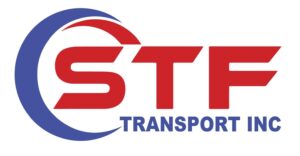
In the fast-paced world of transportation, efficient truck dispatching is essential for ensuring timely deliveries, maximizing productivity, and maintaining customer satisfaction. Truck dispatchers play a critical role in coordinating the movement of goods, vehicles, and drivers, overseeing logistics operations, and managing unforeseen challenges along the way. In this blog post, we’ll explore the fundamentals of truck dispatching and share strategies for optimizing dispatch operations to drive efficiency and success.
What is Truck Dispatching?
Truck dispatching involves the coordination and management of truck drivers, vehicles, and shipments to ensure timely pick-up and delivery of goods. Dispatchers are responsible for assigning drivers to loads, planning routes, communicating with drivers and customers, and resolving any issues that may arise during transportation. Effective dispatching requires strong organizational skills, attention to detail, and the ability to adapt to changing circumstances quickly.
Key Responsibilities of Truck Dispatchers:
- Load Assignment: Dispatchers assign drivers to loads based on factors such as driver availability, vehicle capacity, and delivery requirements. They ensure that each load is assigned to the most suitable driver and vehicle for efficient transportation.
- Route Planning: Dispatchers plan optimal routes for drivers to minimize mileage, fuel consumption, and delivery times. They consider factors such as traffic conditions, road closures, and weather forecasts to select the most efficient and safe routes for transportation.
- Communication: Dispatchers maintain regular communication with drivers throughout the transportation process, providing updates on load assignments, route changes, and delivery instructions. Effective communication helps drivers stay informed and navigate challenges effectively.
- Problem-Solving: Dispatchers are responsible for resolving any issues or challenges that may arise during transportation, such as mechanical breakdowns, traffic delays, or customer issues. They work quickly to find solutions and minimize disruptions to delivery schedules.
- Documentation: Dispatchers ensure that all required documentation, such as bills of lading, shipping manifests, and delivery receipts, is completed accurately and submitted on time. Proper documentation is essential for tracking shipments, confirming deliveries, and maintaining compliance with regulatory requirements.
Strategies for Optimizing Truck Dispatching Operations:
- Utilize Technology: Invest in transportation management software (TMS) and dispatching software to streamline dispatch operations, automate routine tasks, and improve efficiency. TMS platforms offer features such as load optimization, real-time tracking, and electronic communication capabilities to enhance dispatching processes.
- Centralize Communication: Implement a centralized communication system, such as a dispatch center or communication hub, to facilitate seamless communication between dispatchers, drivers, and customers. Centralized communication ensures that all stakeholders are kept informed and can collaborate effectively throughout the transportation process.
- Implement Efficient Routing: Use routing software and GPS technology to optimize routes and minimize unnecessary mileage and fuel consumption. By selecting the most efficient routes, dispatchers can reduce transportation costs, improve delivery times, and enhance overall fleet productivity.
- Provide Driver Support: Offer comprehensive support to drivers, including pre-trip planning, route assistance, and ongoing communication throughout the journey. Empower drivers with the tools and resources they need to navigate challenges effectively and deliver exceptional service to customers.
- Monitor Performance Metrics: Track key performance metrics, such as on-time delivery rates, driver utilization, and fuel efficiency, to identify areas for improvement and measure success. Regularly analyze dispatching data to identify trends, pinpoint inefficiencies, and implement targeted strategies for optimization.
